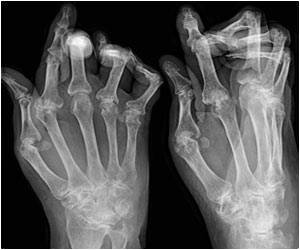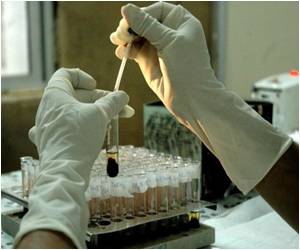At The Scripps Research Institute (TSRI), scientists focusing on an extraordinary family of cow antibodies points to new ways to make human medicines.

Antibodies, part of our immune system, are large proteins that resemble lobsters-with a tail and two identical arms for grabbing specific targets (called "antigens," often parts of bacteria or viruses).
At the business end of each arm is a small set of protein loops called complementarity-determining regions or CDRs, which actually do the grabbing. By rearranging and mutating the genes that code for CDRs, an animal's immune system can generate a vast and diverse population of antibodies-which collectively can bind to just about any of the body's foreign invaders.
In humans and in many other mammals, most of an antibody's specificity for a target is governed by the largest CDR region, CDR H3. Researchers have been finding hints that an unusually long version of this domain can sometimes be the key to a successful defense against a dangerous infection.
Waithaka Mwangi, assistant professor in the Texas A and M College of Veterinary Medicine and Biomedical Sciences (CVM), suggests thinking of these long CDRs as a probe on a thin extended scaffold that can fit narrow crevices to reach and bind unique hidden pathogen determinants that ordinary antibodies cannot.
Reports on these antibodies recently caught the interest of Smider, whose area of research includes finding new ways to generate therapeutic antibody proteins.
Advertisement
The team performed a detailed structural and sequence analysis of these unusually long CDR H3 cow antibodies, to gain insight into how they are made naturally-and how such structures might be engineered in the laboratory.
Advertisement
Although the structure of the long CDR H3 protein in Wilson's human anti-HIV antibody had seemed unusual, the corresponding structure in the cow antibodies turned out to be unique in the known world of animal antibodies: a long "stalk" element topped by an antigen-binding "knob." Sequencing of the DNA that codes for the knob region revealed an unusual abundance of cysteine-a sulfur-containing amino acid that is apt to bond to a nearby cysteine on the same protein chain, thus forming a loop.
Analyses of these DNA sequences also indicated that, in the cow B-cells where these antibodies are made, the knob-coding gene segments are extraordinarily likely to develop point mutations that either add or subtract cysteines. The effect of these tiny mutations is to create or remove-often radically-antigen-grabbing loops on the structure.
"This is a very efficient way to evolve new protein folds," said Wang. Indeed, it seems to be the principal way in which the cow immune system creates a diverse set of these long CDR H3 antibodies.
In the cows, binding of these antibodies to viruses is almost entirely done by the knob on the long CDR H3, which shows that these antibodies do have an important function in the immune system.
"For the very first time we have an ultra-long CDR3 antibody binding to an actual pathogen," said Mwangi.
One question that remains is why the cow immune system evolved to make such antibodies. Smider suspects that it has to do with cows' unusual, four-chambered, grass-fermenting stomach, with its extensive collection of bacteria and other microorganisms.
Smider, Schultz, and Wang, who now has his own laboratory at the California Institute for Biomedical Research (CALIBR), hope to harness the potential power of long CDR H3 antibodies for a wide variety of human-and perhaps also veterinary-medical applications.
The study appears as the cover story in the recent issue of the journal Cell.
Source-ANI










